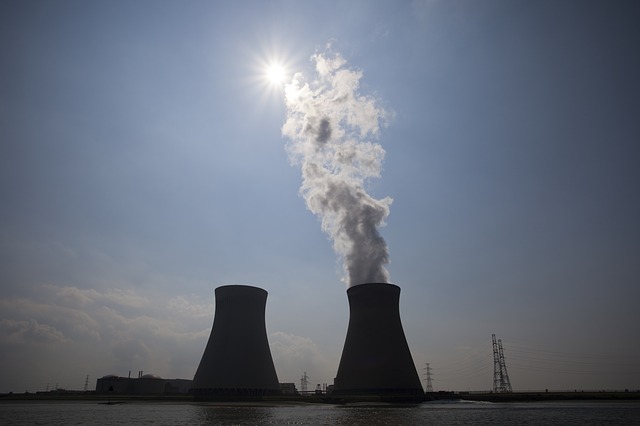By Hillary Aidun and Malia Libby
Last Tuesday, April 14, thirteen states, New York City, and the District of Columbia sued the Department of Energy (DOE) to challenge revisions to the rule governing energy efficiency updates. A similar suit was filed by a coalition of green groups. As discussed below, DOE’s new “process rule,” if allowed to stand, will result in enormous and needless increases in greenhouse gas emissions—following a pattern of dangerous energy efficiency rollbacks by the Trump DOE.
The process rule sets the procedures for developing energy conservation standards for appliances such as dishwashers and refrigerators. DOE’s recent revisions—finalized on January 16—require the Department to codify private sector consensus standards for test procedures, which could allow regulated parties to exercise disproportionate influence over the process for setting energy conservation requirements. The amended rule also establishes a new threshold for the amount of energy conservation needed to trigger to process of updating standards. Under the Energy Policy and Conservation Act, DOE can only set appliance standards that will lead to a “significant” conservation of energy. The revised process rule amends the definition of “significant” to apply only to changes that would save 0.3 quadrillion BTUs of energy consumed by appliances on site over 30 years, or if less than that amount, a 10% improvement over existing standards. By DOE’s own calculations, only 60% of appliance standards would have met that threshold over the past three decades.
DOE’s refusal to make updates that would improve energy efficiency by 10% or less carries significant implications for the climate. Our independent analysis found that tightening energy efficiency standards by 10% just for refrigerators, refrigerator-freezers, and freezers could avoid over 250,000 tons of carbon dioxide per year, based on an average of DOE’s energy use figures for those appliances, the Energy Information Agency’s estimate of carbon dioxide emitted per kilowatthour, and sales data provided by the website Statista. All told, that means 1.6 million tons by 2025—equivalent to taking a total of over 300,000 cars off the road, based on the EPA’s calculations of emissions from a typical passenger vehicle. The energy savings would also be sufficient to provide electricity to 64,685 homes per year, based on EPA data. (While refrigerators have become four times more efficient in the last fifty years and an additional 10% efficiency improvement may or may not be feasible, the greenhouse gas implications of such an improvement illustrate the new Process Rule’s potential impacts.)
Making the same level of energy efficiency improvements for weatherized and non-weatherized gas furnaces could avoid even more greenhouse gas emissions. Using DOE’s data for furnace input capacity, the average heat content of natural gas, and sales data provided by Statista—and assuming a run time of four hours per day for seven months—we found that a 10% improvement in energy efficiency for gas furnaces would achieve almost enough energy savings to avoid a new nuclear reactor, or enough to provide electricity to 118,823 homes in a year. It could also avert over 2.8 million tons of carbon dioxide per year and over 8.5 million by 2025. That is the total amount of carbon dioxide emitted by approximately 1.7 million cars in five years.
These examples represent just the tip of the iceberg. The process rule applies to sixty classes of appliances.
The DOE’s process rule revision is consistent with other deregulatory moves, including the repeal of improved light bulb standards that were set to come into effect on January 1 of this year. Those standards were strong enough to effectively phase out incandescent light bulbs, which are relatively inefficient. In January 2017, on the day before President Trump’s inauguration, DOE also expanded the scope of those standards to apply to a variety of types of light bulbs, in addition to classic “pear-shaped” A-lamp bulbs. Both actions were taken under the Energy Independence and Security Act, which was passed with bipartisan support and signed by President George W. Bush in 2007.
On September 5, 2019, DOE repealed the rule expanding the light bulb standards’ scope. Then on December 23, DOE blocked the stronger energy standards from applying even to A-lamp bulbs, asserting that their efficiency improvements were not economically justified. This finding is inconsistent with an analysis by the American Council for an Energy-Efficient Economy which found that the updated standards would have saved a typical U.S. household about $180 per year, or a total of $22 billion, by 2025. Moreover, according to the same analysis, the new rules would have avoided 60 million metric tons of carbon dioxide by 2025—equivalent to the carbon dioxide emitted by 13 million cars. States and green groups have challenged the light bulb rollbacks in court.
DOE has also proposed a number of regulatory rollbacks that have not yet been finalized. One would make it easier for appliance manufacturers to be exempted from federal energy efficiency testing. Another would create a new product class for residential dishwashers with a relatively short cycle time, potentially allowing the DOE to regulate them under laxer energy efficiency standards. The Trump administration has received attention for refusing to slow its deregulatory tear, despite a global pandemic that limits the public’s ability to comment as people are suddenly responsible for home schooling their children, lack access to the Internet now that libraries are closed, or are caring for sick relatives. It does not appear that the COVID-19 crisis will stall the administration’s effort to roll back energy efficiency measures. If finalized, the outstanding proposals could have serious consequences for the climate.



